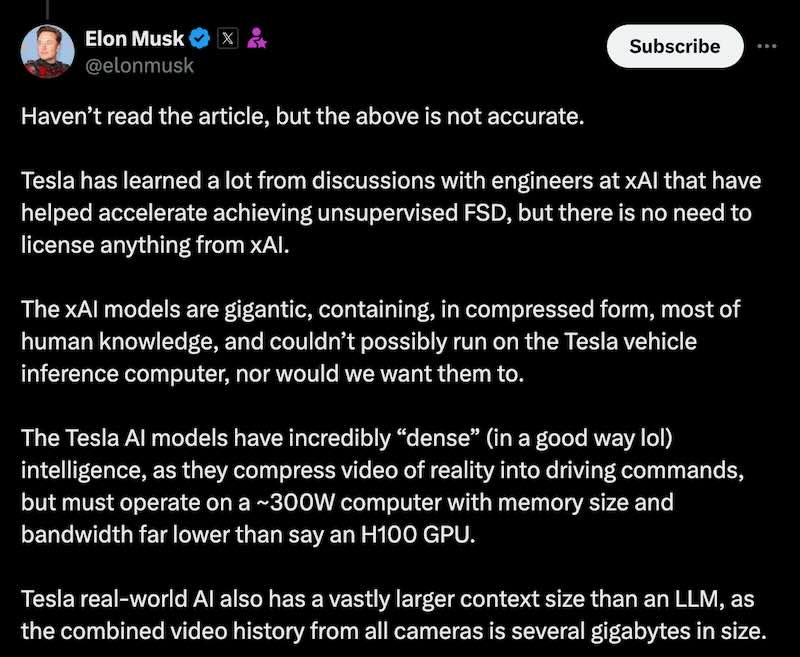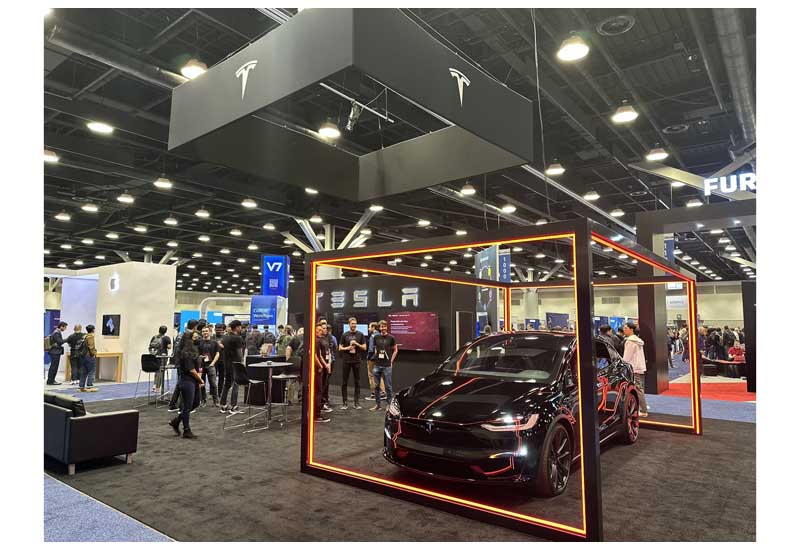In the fast-paced world of autonomous driving, Tesla’s Full Self-Driving (FSD) technology has been making waves. Recent reports from WSJ suggested a potential revenue-sharing deal between Tesla and xAI, Elon Musk’s AI startup. However, the reality is far more nuanced.
Contrary to initial speculations, there’s no formal licensing agreement between Tesla and xAI. Musk clarified that while Tesla has gained insights from xAI engineers, it doesn’t necessitate a licensing arrangement. This revelation sheds light on the complex interplay between Musk’s various ventures.
Tesla’s FSD development has apparently benefited from discussions with xAI engineers. These interactions have seemingly accelerated progress towards unsupervised FSD – a holy grail in autonomous driving. It’s a testament to the power of cross-pollination in the tech world.
Elon highlighted a crucial distinction between xAI and Tesla’s AI models. xAI’s models are described as “gigantic,” encompassing a vast swath of human knowledge. In contrast, Tesla’s AI models are characterized as having “incredibly dense intelligence,” specifically tailored for real-world driving scenarios.

One of the most intriguing aspects of Tesla’s AI approach is its focus on efficiency. The company’s AI models must operate on relatively modest hardware – a computer consuming around 300W with limited memory and bandwidth. This constraint forces Tesla to develop highly optimized AI solutions.

The AI 3 platform consumes 100W of power, and the 300W mentioned likely refers to the AI 4 (HW4) platform. For Tesla, a company highly focused on energy efficiency, this power consumption is relatively high. Of course, AI 5 will likely consume even more power, but it is expected to feature dynamic power management.
Tesla’s real-world AI boasts an impressive feature – a vastly larger context size compared to traditional language models. By combining video history from multiple cameras, Tesla’s system can process several gigabytes of contextual information. This capability is crucial for making split-second decisions on the road.
As Tesla continues to refine its FSD technology, the collaboration with xAI – informal as it may be – could prove invaluable. The challenge lies in translating the broad knowledge of large AI models into the specific, real-time demands of autonomous driving.
Tesla’s journey towards full self-driving capability is far from over, but these recent developments suggest they’re accelerating in the right direction. As the lines between AI research and practical applications blur, we might just see more unexpected collaborations driving innovation forward.
Related Post
The AI Race in Autonomous Driving: Navigating the Road to Full Autonomy
Tesla AI Visionary Reveals Roadmap for Self-Driving Cars and Robots
Tesla Cortex: The Supercomputer Powering the Future of AI and Autonomous Driving
